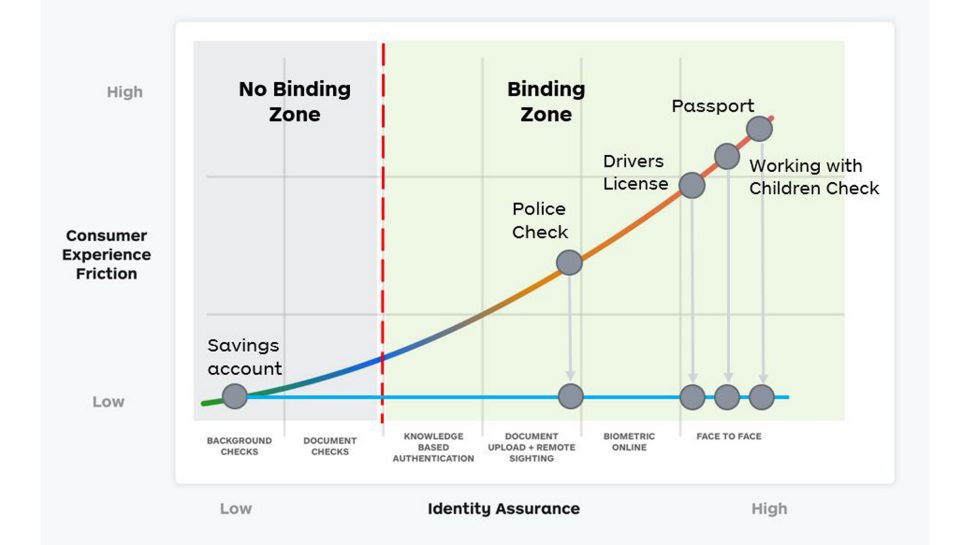Making employment screening easier – while managing risk
The increasing use of technology and rise of employment fraud have changed employment risk profiles. At a recent HR summit, Australia Post’s Christian Seely introduced Workforce Verification, a new employment screening platform that strikes a balance between workplace risk and employee experience.

More than half of business fraud is typically perpetrated by an organisation’s own employees. With up to 30% of job applications containing false information it can be tough for employers to manage the inherent risks associated with employment. To add to that, recent regulatory changes to Police Checks mean that mandatory employment screening can be onerous and complex to manage.
During his workshop at a recent HR summit, Australia Post’s Head of Product - Identity Services, Christian Seely, described the underlying challenge that faces every HR professional today.
“How can you reduce the risk of fraud while also reducing the inherently high friction involved with high-stakes employment screening?” he asked. “Many organisations have an employment screening process that resembles a Walkman - clunky, confusing and time-consuming but that somehow works. This is why some employers say they have no burning desire to change anything. Yet today’s prospective employees expect a better recruitment experience.”
This sentiment was echoed in the responses to Australia Post’s survey of attendees at the summit. 39% said one of their biggest recruitment challenges is creating the right employee experience, with nearly a quarter of those citing ‘consolidating onboarding processes and credential monitoring’ as part of the issue.
As a major employer of contingent staff, and with a diverse workforce comprising people from 163 different countries, Australia Post understands this problem very well. It also has a long history of providing trusted and secure identity checks including more than eight million identity verifications every year, in addition to two million employment-related checks.
Overcoming the on-boarding frustration
“Through our own research of 100 employers, and over 1,000 candidates and employees, we found that 91% of organisations are frustrated by their employment screening process. But because it’s transactional rather than strategic, there’s no huge desire to change,” Seely said.
He pointed out that candidates just want to start a new job but “worry about divulging sensitive information in a complicated process and want more transparency.”
The majority of employers do want to improve the experience for their future talent. In fact, more than half of those we surveyed are concerned about the cost, time and manual handling involved in effective employment screening. They also want to reduce the time it takes to fill positions while reducing their own risk in handling sensitive data.
Candidates, on the other hand, told Australia Post they want a quicker process that gives them more confidence that their data is secure and more choice over how they complete the screening.
Australia Post’s new Workforce Verification solution is designed to meet all these requirements, and is already being used by a number of enterprises, recruitment and government agencies.
This solution helps streamline employment screening through an online tool for identity, police and work visa verification checks. Candidates also have the option of presenting their identity documents in-person at any of Australia Post’s 3,500 Post Offices.
“Workforce Verification is a differentiated solution,” Seely says. “It’s all online from the employer’s perspective and they can see in real-time the status of the checks. There’s also no need for them to manage sensitive data, and we’re the only provider of employment checks with the option to have identity verified online or in-store across our Post Office network.”
Making high-stakes checks simpler
“Employment screening is inherently high friction because there is a lot at stake,” explained Seely. “It also depends on the context: opening a savings account is less risky than getting a passport. Employment screening typically sits in the ‘binding zone’, which means the employee needs to be bound to their identity documents.”
This is why obtaining a Police Check has become more complex. “It used to simply require 100 points of ID but now four different identity documents need to be presented, and the person needs to be bound to their ID,” said Seely.
Police checks are the most frequently used employment screening checks, with 82% of the summit survey respondents indicating they consider them to be one of the most important background checks. About half use a third party provider to carry out those Police Checks.

Australia Post recently launched Australia’s first Police Check that doesn’t require a candidate or employee to verify their ID again. They have the option to store their verified identity data for up to 10 years and re-use it if they are required to perform a similar check in the future, completely removing friction from the Police Check application process.
Seely also envisioned how the future of employment screening will shift from an ‘employer-led’ process to a ‘consumer-led’ experience, where candidates and employees would share pre-verified identity, credentials, licences etc. with their employer in a seamless way. He added, “We’ve already started bringing this to life”.
Is it time to upgrade your employment screening process?
For employers considering whether Workforce Verification is the right solution for them, Seely suggested weighing up these five factors:
- Time. How long are your background checks taking? Days or weeks are too long when candidates expect it to be complete within hours or even minutes.
- Visibility. Can you see real-time updates and share progress with your candidates?
- Choice and convenience. Different candidates will have different needs. Foreign talent have a low ID footprint for example, while others are more privacy conscious and won’t upload documents online.
- Privacy and security. You’re dealing with very sensitive personal, identity and background check information so compliance and security matters.
- Experience. A good employment screening process should be a seamless and positive experience for both the candidate and employer.

Your sharpest recruitment tool
Streamline your employment screening with our online tool for identity, police and work visa verification checks.



